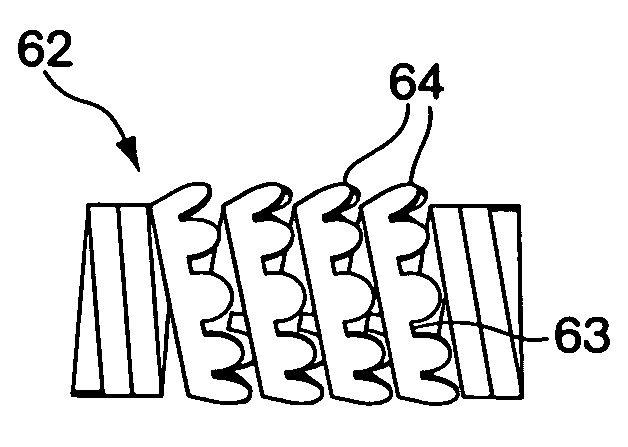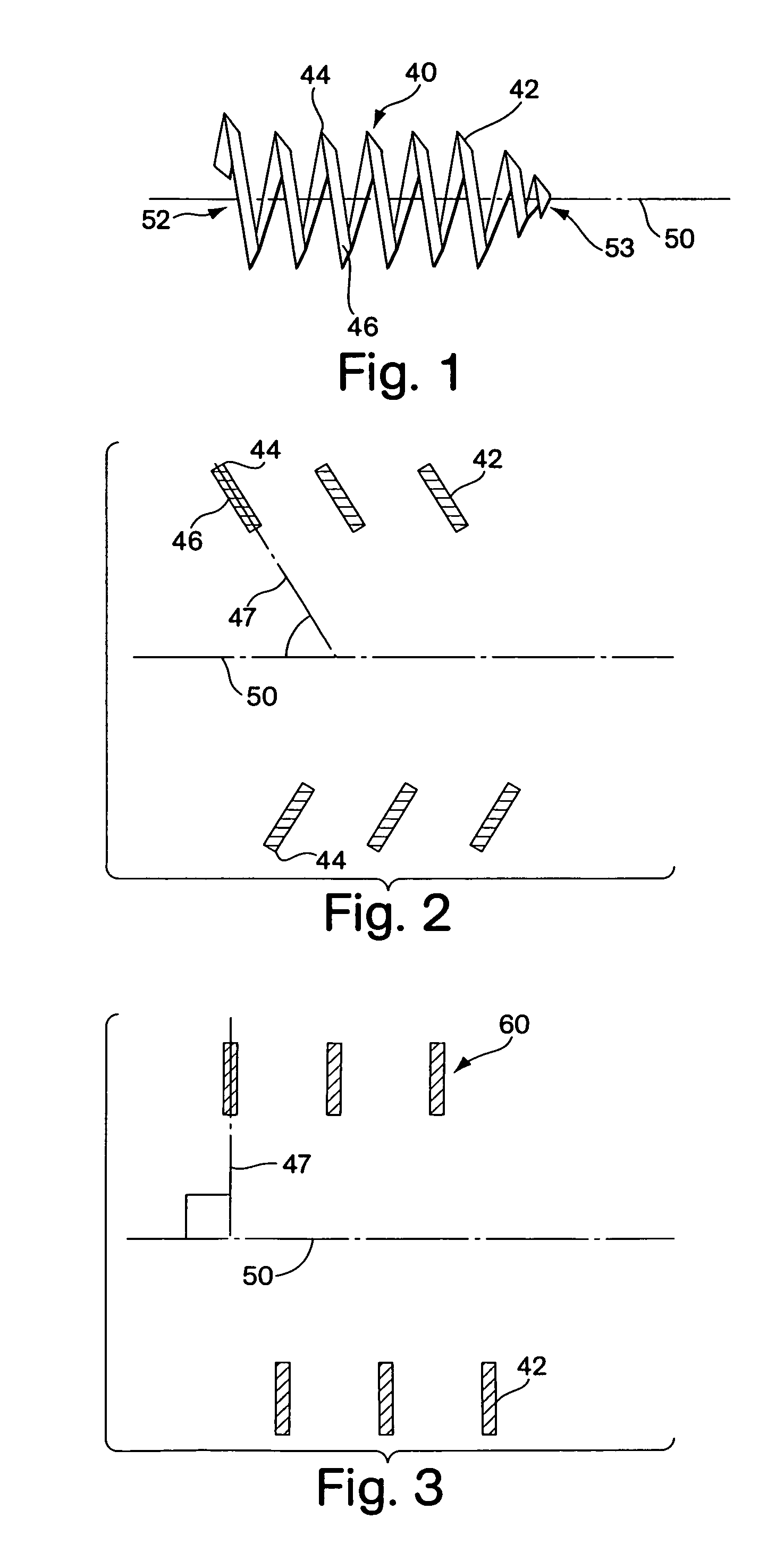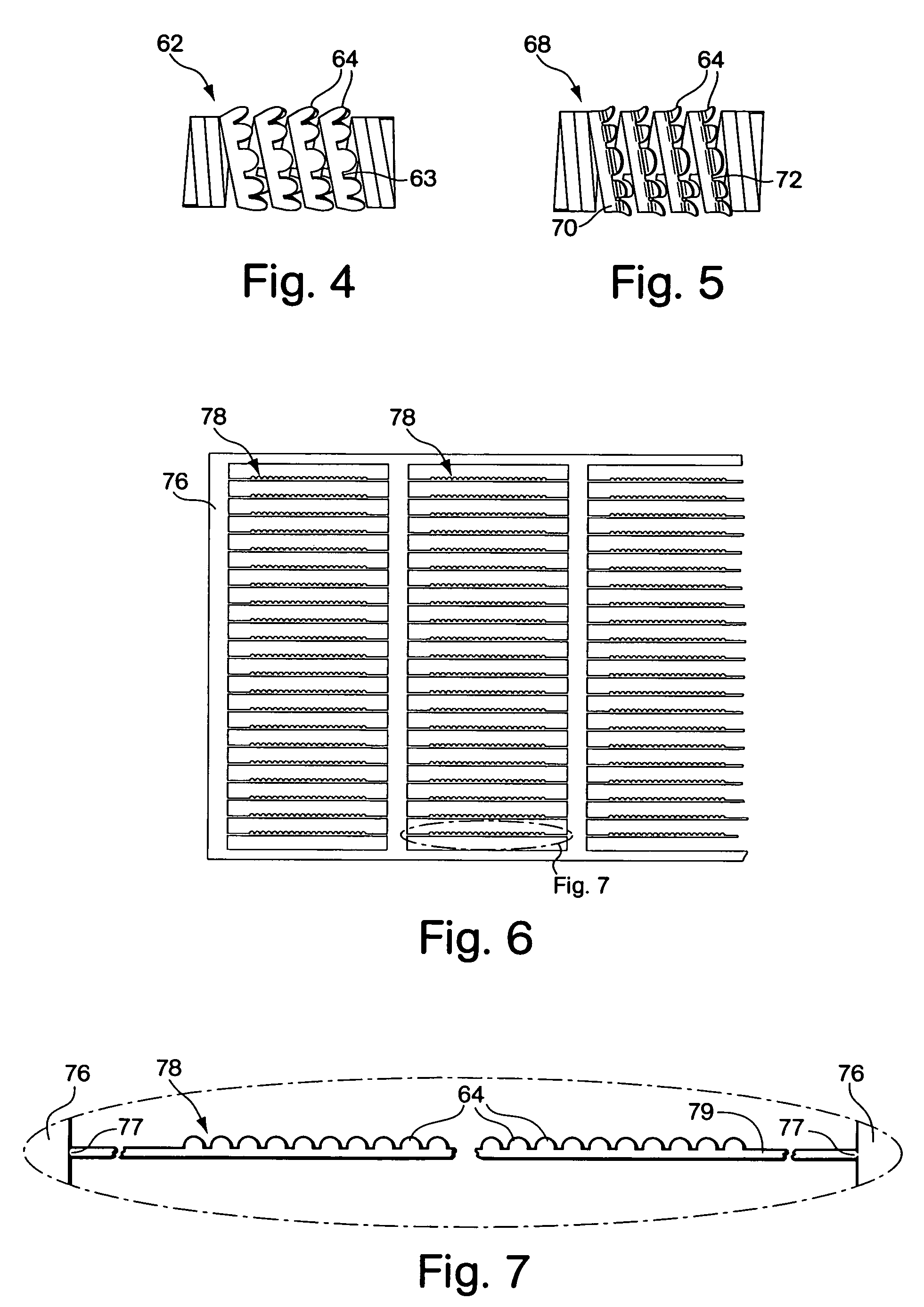Implant anchor systems
a technology of implanted devices and anchor systems, which is applied in the field of tissue implant devices, can solve the problems of ejecting the device from the tissue, affecting the patient's recovery, and the conventional methods of anchoring the device to the tissue such as stapling or suturing, and achieves the effects of avoiding migration, improving anchoring capability, and being easy to integrate into small mechanical devices
- Summary
- Abstract
- Description
- Claims
- Application Information
AI Technical Summary
Benefits of technology
Problems solved by technology
Method used
Image
Examples
Embodiment Construction
[0029]The implant devices of the present invention are particularly useful in treating ischemic tissue such as that which often occurs in a myocardium of the heart. The implant device may be inserted into the myocardium through the epicardial surface at an entry site such that the device extends the majority of the thickness of the myocardium towards endocardial surface.
[0030]FIG. 1 shows an embodiment of a tubular implant device. The canted coil device 40 is formed from a filament 42 of rectangular cross-section such as a strand of flat wire. The implant device has a proximal portion 52 and a distal portion 53. As shown in FIG. 2, the coil is formed so that the major cross-sectional axis 47 of the rectangular wire is oriented at an acute angle to the longitudinal axis 50 of the coil 40. The orientation gives each turn 46 of the coil a projecting edge 44, which tends to claw into tissue to serve as an anchoring mechanism for the device.
[0031]FIG. 3 shows a segment of a wrapped ribbo...
PUM
 Login to View More
Login to View More Abstract
Description
Claims
Application Information
 Login to View More
Login to View More - R&D
- Intellectual Property
- Life Sciences
- Materials
- Tech Scout
- Unparalleled Data Quality
- Higher Quality Content
- 60% Fewer Hallucinations
Browse by: Latest US Patents, China's latest patents, Technical Efficacy Thesaurus, Application Domain, Technology Topic, Popular Technical Reports.
© 2025 PatSnap. All rights reserved.Legal|Privacy policy|Modern Slavery Act Transparency Statement|Sitemap|About US| Contact US: help@patsnap.com



